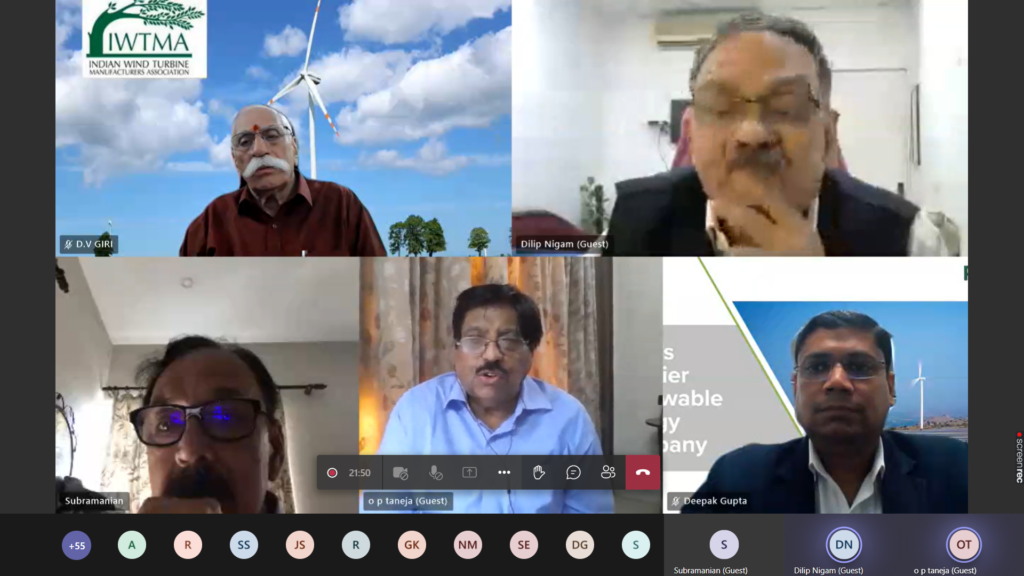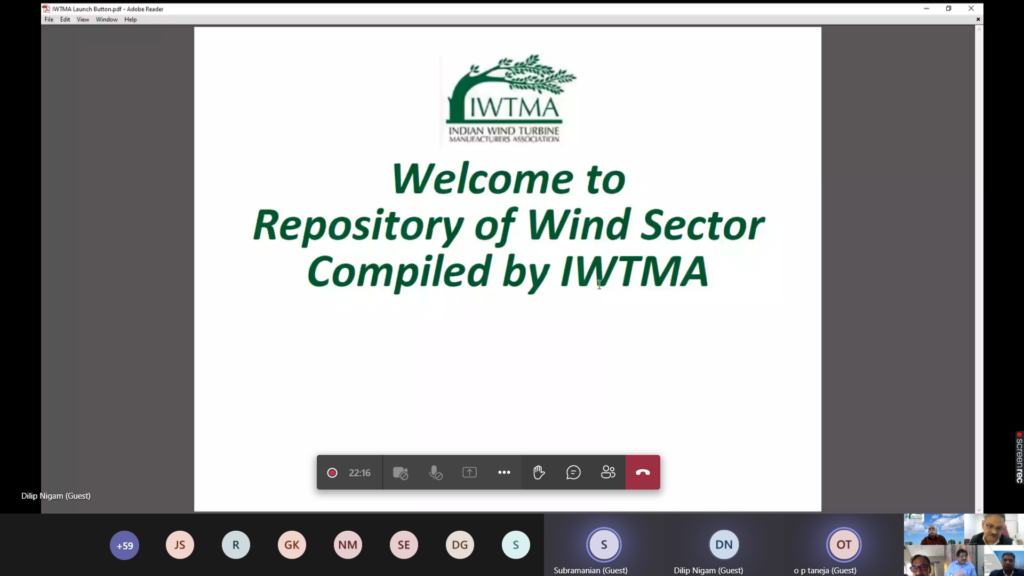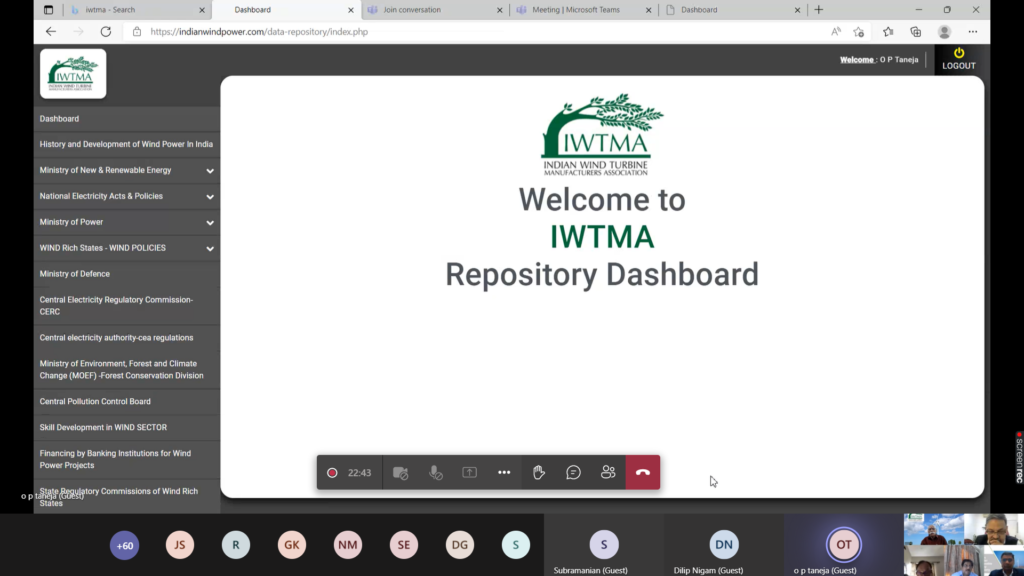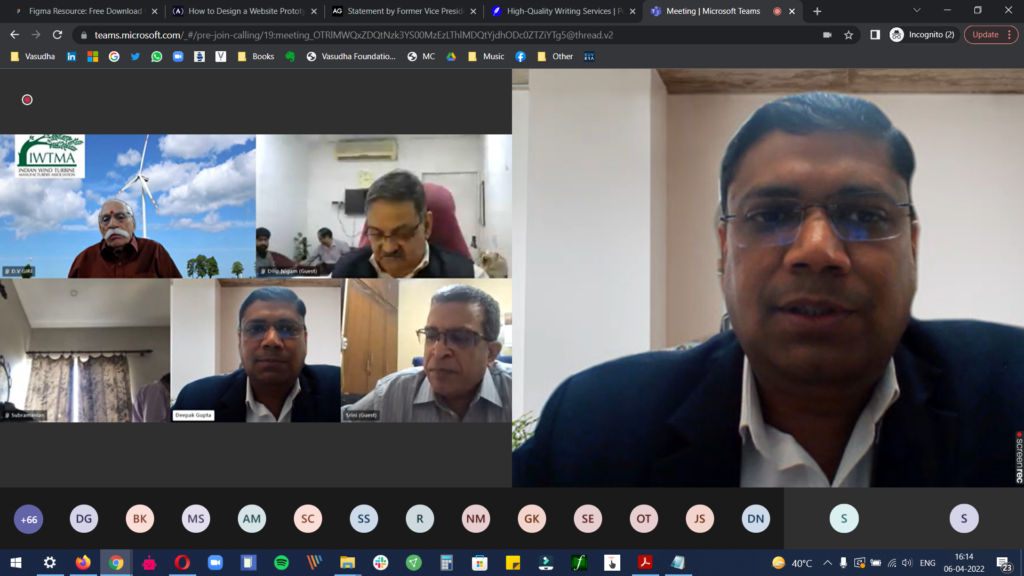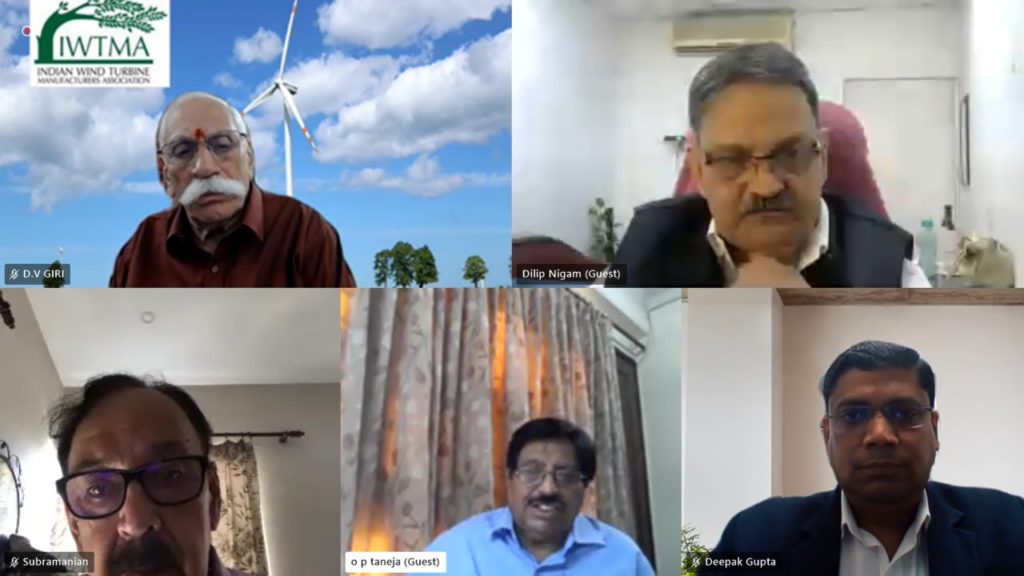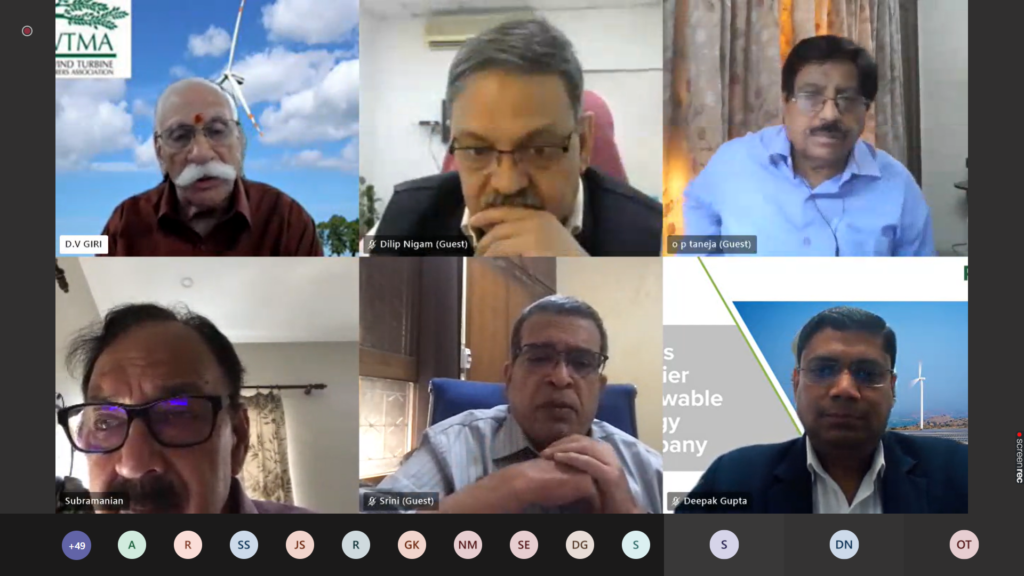Vasudha in collaboration with the Indian Wind Turbine Manufacturers Association (IWTMA) hosted a webinar to launch IWTMA’s Data Repository and a Briefing Paper on Strategies to Vitalise the Repowering of Wind Power Projects in India by Vasudha.
Speakers included Dilip Nigam, Advisor, Ministry of New and Renewable Energy (MNRE), Government of India, V Subramanian, Former Secretary, MNRE, Government of India, Deepak Gupta, Vice President, Renew Power, D V Giri, Secretary General, IWTMA. The event was moderated by Vasudha CEO Srinivas Krishnaswamy, with a presentation by Jaideep Saraswat, Senior Manager, Vasudha Foundation, and closing remarks by Raman Mehta, Programme Head, Vasudha Foundation.
The Data Repository is a one-stop collection of data related to the wind power sector in India. It endeavours to provide data related to wind industry in India with the aim to benefit various stakeholders. Its target audience are investors, Independent Power Producers (IPPs), corporate and government institutions dealing with wind power generation, associations and industry leaders, international organisations, banks and financial institutions, consultants, Clean-Tech specialists, lawyers, surveyors, and host of other parties.
The Data Repository covers, among other things, notifications, guidelines, regulations, schemes of Central Government and wind rich states of India, policies of Center and States, potentials of the wind rich States at various Hub Heights of the turbines, entities catering to wind and renewable sector such as Energy Exchanges etc. It will also provide info related to topics important for the development of wind energy, skill development in wind energy, Nodal Agencies and their development programs, original/base documents, amendments, etc.
Vasudha’s new Briefing Paper focuses on vitalising the repowering of wind power projects in India. Wind energy, one of the country’s oldest and most developed renewable energy technologies, is expected to contribute 140 GW to India’s ambitious target of 500 GW of non-fossil fuel capacity by 2030. However, the pace of wind capacity addition in India has plateaued. In the last three fiscal years, India has installed an average of 1.7 GW Wind Power Projects (WPPs). Availability of land and acquisition issues surfaced as the biggest reason for this slow progress. In that context, this paper proposes strategies to increase wind capacity through repowering.
The subsequent panel discussion explored the importance of a reliable database for decision-making and evidence building around wind power in India. Furthermore, the discussants also explored ways to expedite the retirement of Government-owned old wind power projects and delve deeper into the roles and responsibilities of the stakeholders.
You can view the entire discussion below or by clicking here.





